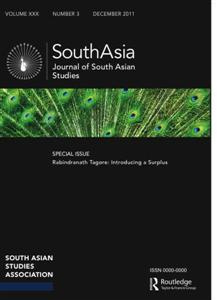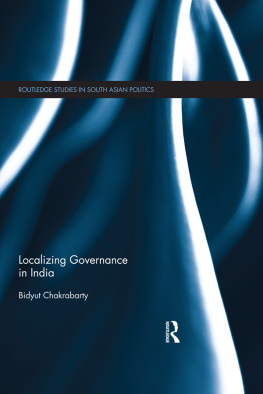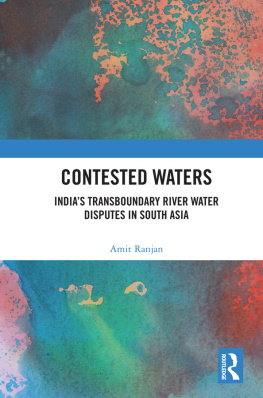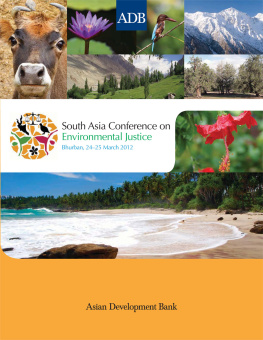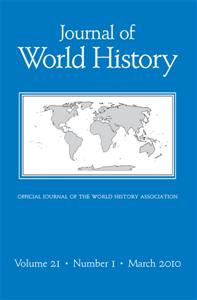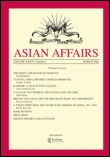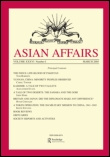Would a plebiscite have resolved the Kashmir dispute?
South Asia: Journal of South Asian Studies
Volume 28, Issue 1, 2005
DOI: 10.1080/00856400500056145
Christopher Snedden
pages 64-86
Available online: 04 Aug 2006
Introduction
On 17 December 2003, the President of Pakistan, General Pervaiz Musharraf, made an unexpected pronouncement. He told a journalist that Pakistan had left aside the United Nations Security Council resolutions that deal with his nation's dispute with India over Jammu and Kashmir (J&K). Further inspection, however, shows that the Pakistani president was forgoing little of substance; rather, he was confirming the reality that a plebiscite in J&K had not been an option since at least the 1972 Simla Accord signed by Indira Gandhi and Zulfikar Ali Bhutto, which stated that all IndiaPakistan differences would be resolved bilaterally.
For India, the Simla Accord merely reaffirmed its existing policy on J&K. The Indians had long ruled out any direct UN involvement in resolving the Kashmir dispute including UN supervision of a plebiscite to ascertain the preference of the people of the region with respect to J&K's international status. The plebiscite plan wasironicallyfirst proposed by India on 26 October 1947 (even as it accepted the accession of the Maharaja of Jammu and Kashmir) and was reiterated by the UN Security Council in 1948. But Indian politicians have been mightily disinterested in the idea since the early 1950s.
For Pakistan, however, the Accord had signalled a slight shift in policy, and this was reversed in military-ruled, post-Bhutto Pakistan, which reinstated the UN resolutions when it became frustrated by Indian back-sliding over J&K. Thereafter, while lurching between military and non-military rule, Pakistan stuck doggedly to the holding of a plebiscite, although this position was more about cajoling an obstinatebut nonetheless democraticIndia than about enabling the people of J&K to determine their state's fate. General Musharraf's pronouncement looks to have ended this strategy of cajolement and finally killed off the idea of a people's plebiscite. Equally, however, his renunciation of this popular test does not count as a major concession.
India may have initially proposed a plebiscite because, among other things, it offered a clinical solution to a messy problem. A poll meant that India or Pakistan could have peacefully acquired all of J&K by obtaining a simple majority of participants' votesprovided, of course, that all parties accepted the result. Furthermore, had a poll been successfully held, India and Pakistan could have normalised their relations, and possibly reduced their escalating military expenditures; normalcy could have been restored in J&K. Those entitled to live within the former princely state (state subjects) could have returned home from internal or external refugee camps, while J&K's important geographic, economic and administrative links with Pakistani Punjab, severed by the heavy fighting in 194748, could have been restored. Finally, a plebiscite would have empowered the people of J&Kand not Indians and Pakistanisto determine their future.
Given the various plusses that the plebiscite offered for the three parties immediately involved in the Kashmir disputeIndia, Pakistan and the people of J&Kwhy was this poll never held? Furthermore, had a plebiscite been held, would it have solved anything? This article addresses these two questions. It examines how the proposal for a plebiscite to resolve the issue of J&K's disputed international status came about in 1947; discusses why the poll was never held and why it was off the IndiaPakistan agenda by the early 1970s; and seeks to determine who might have won had a vote occurred. The article concludes thateven had a plebiscite been conductedit would probably not have resolved the dispute over whether J&K should be part of India or Pakistan.
How did the proposal for a plebiscite come about?
India's governor-general, Lord Louis Mountbatten, first formally proposed a plebiscite to resolve J&K's contentious status while accepting the accession to India of Sir Hari Singh, the Maharaja of Jammu and Kashmir, on 26 October 1947.
A proposal to conduct a plebiscite in J&K also reflected Whitehall's practice of conducting polls in areas whose post-colonial status was in contention. Before Partition, polls had been conducted for people living in the Sylhet District of (east) Bengal and in the North-West Frontier Province (NWFP) on exactly the same issue that confronted the J&K maharajawhether to join India or Pakistan. Majorities in both areas chose Pakistan. After Partition, the Indian Government's proposal for a plebiscite in J&K also matched the precedent it set by promisingand later deliveringa poll to resolve the disputed status of Junagadh. Following the accession by Junagadh's Muslim nawab to Pakistan, Indian forces entered the Hindu-majority princely state on 9 September 1947 at the invitation of the Junagadh Executive Council.
A plebiscite for the people of J&K seemed, therefore, the logical way forwardparticularly as, on the face of it, the two situations looked like mirror-images of one another. While Junagadh was dominantly a Hindu state ruled by a Muslim, J&K had a 77 percent Muslim-majority population (see Jammu City, J&K's winter capital, was connected to Sialkot via a road and railway. Traditionally, Karachi was the port for J&K.
Table 1 - Area, Population and Religious Composition of the Princely State of Jammu and Kashmir in 1941
Table 1 Area, Population and Religious Composition of the Princely State of Jammu and Kashmir in 1941 | Area (sq. miles) | Population | Religious composition | Number |
|---|
| 84,471 | 4,021,616 | 77.06 percent Muslim | 3,098,872 | | 20.46 percent Hindu | 822,955 | | 1.37 percent Sikh | 54,975 | | 1.01 percent Buddhist | 40,684 | | 0.1 percent Unspecified Others | 4,130 | | Source: R.G. Wreford (ed.), Census Of India 1941, Vol.XXII, Jammu & Kashmir State, Part III, Village Tables (Srinagar: Jammu and Kashmir Government, 1942). |
|
Yet while Pakistan may have been the natural option, Maharaja Hari Singh had other things on his mind. For a start, he was a Hindu. This suggested that he might like to join India, the secular dominion in which Hindus were nevertheless numerically (and politically) dominant. In August 1947, under the Radcliffe border award, when Indiato Pakistan's bewildermentobtained a small land corridor that connected Pathankot in far north-western India with Kathua in the east of J&K's Jammu Province, union with India became not only appealing but geographically feasible.
Nevertheless, Hari Singh's personal preference was to join neither dominionhis desire was an independent state in which his autocratic rule could continue. However independence was also out of the question. The departing British and the leaders of India and Pakistan had all made it clear that they expected the maharaja to make an accession to one of the new dominions.
Finally, J&K's messy internal politics in 1947, which revolved around two Muslim-based political parties with differing aspirations for the future of the princely state, made the state's accession a divisive issue. We do not know for certain what option the majority of people in J&K favoured in 1947 as they were never asked directly (via a plebiscite) or indirectly via their representatives in the J&K Praja Sabha, the local legislature partly elected by property owners, professional people and other members of the kingdom's elite. Nevertheless, an assessment of newspapers that actively reported on J&K in 1947 suggests that many wanted their state to join Pakistan. On the other hand, the newspaper assessment also suggests that most J&K Hindus and Sikhs, the majority of whom lived in eastern Jammu Province, and possibly most J&K Buddhists, who lived in Ladakh, wanted the state to join India.

